Baler machines use a hydraulic ram to compress various materials into compact shapes for easy transport, processing, storage, or recycling. A baler can be adapted depending on the waste material it processes. Read More…
Since 1962, Maren has led the industry, building powerful and reliable manual tie, automatic tie and two ram balers, shredders and conveyors. That’s why many of the most successful paper & box plants, distribution centers, post consumer recyclers, and printers rely on Maren Balers to bolster their bottom line. Maren’s reputation for great customer service has carried from generation to...
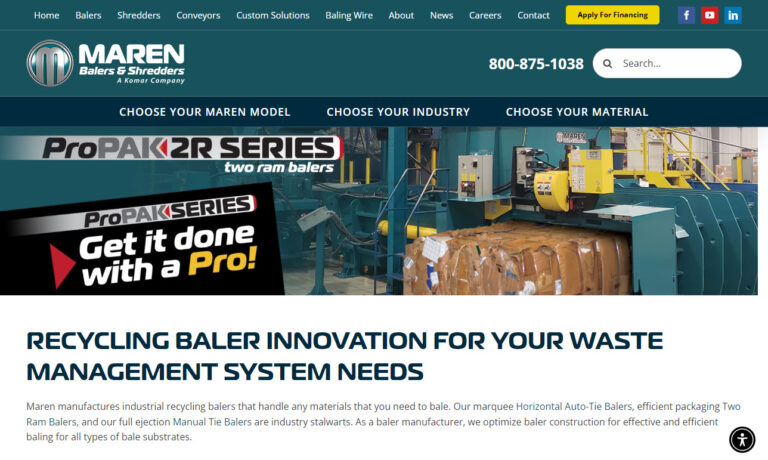
In Business for over 100 years, Harris has maintained its position as the industry leader by paying attention to its customers needs. Our vertical, horizontal and 2-ram balers process recovered papers, paperboard, plastics, solid waste and light ferrous and non ferrous metals. Harris supplies the right equipment for your application.
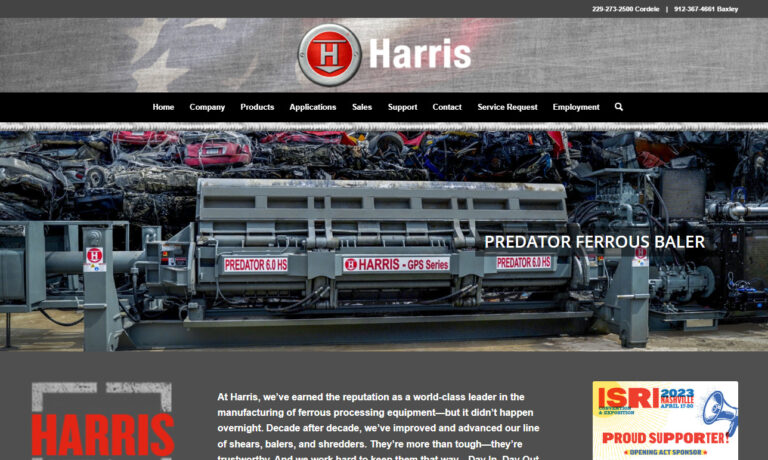
The only thing stronger than an Excel baler is the loyalty of our customers. Excel continues to break new ground by designing equipment with energy-saving technologies, developing balers to fit your business and solve your problems, and introducing products that process more material and make you more money. While the competition makes their balers cheaper, we make Excel balers better!
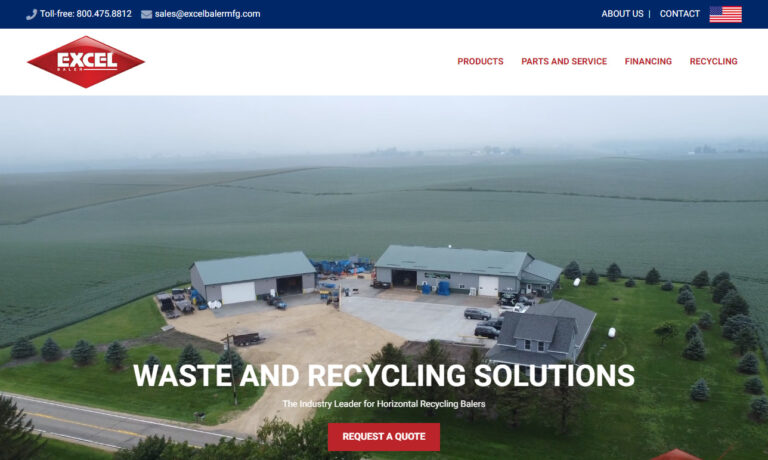
SSI Shredding Systems provides a wide range of waste management products, including industrial shredders, industrial balers, industrial reducers and industrial compactors.
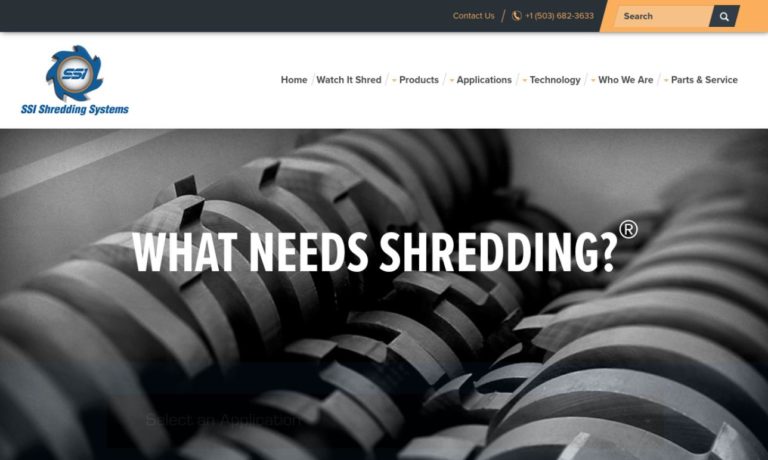
If you are currently paying for the disposal of cardboard, paper, plastic or non-ferrous metals; than consider International Baler Corporation & our range of balers and related equipment.
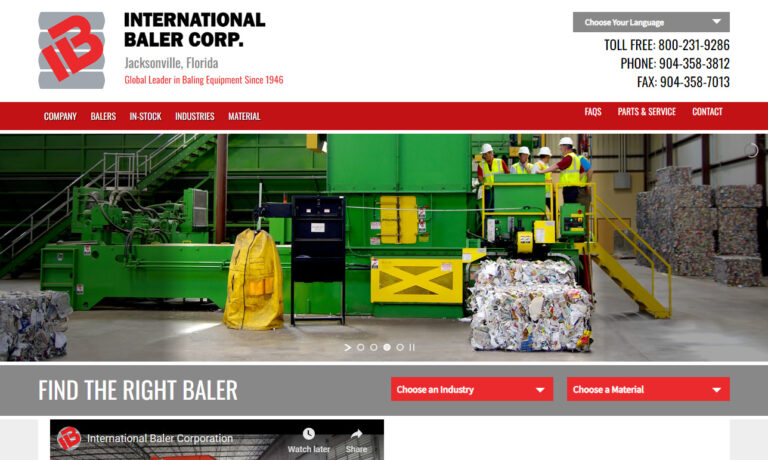
More Baling Machine Manufacturers
How Baler Machines Work
To begin the process, soft or hard waste is loaded into the baler machine. The material is fed through a hopper and tin pan linked to a hydraulic ram. The hydraulic ram is contained by a steel frame and driven by an electric motor pump. The electric pump pressurizes fluid inside the hydraulic cylinder to generate the required compression force. The ram compresses the material into a small, uniform block.
The bale chamber determines the bale's shape before it’s ejected. Before or during ejection, the bales are tied with galvanized or black annealed wire to keep their shape. Then the ejection ram removes the material and any uncompressed material from the machine.
Balers have sturdy steel frames and an intentionally designed structure to ensure a long life with minimal maintenance. Balers are often designed with anti-wear steel plates for support, properly fitted main rams to reduce physical wear, and shearing tools to distribute stress evenly throughout the unit. High-performance balers use precision parts to eliminate misalignment and premature wear.
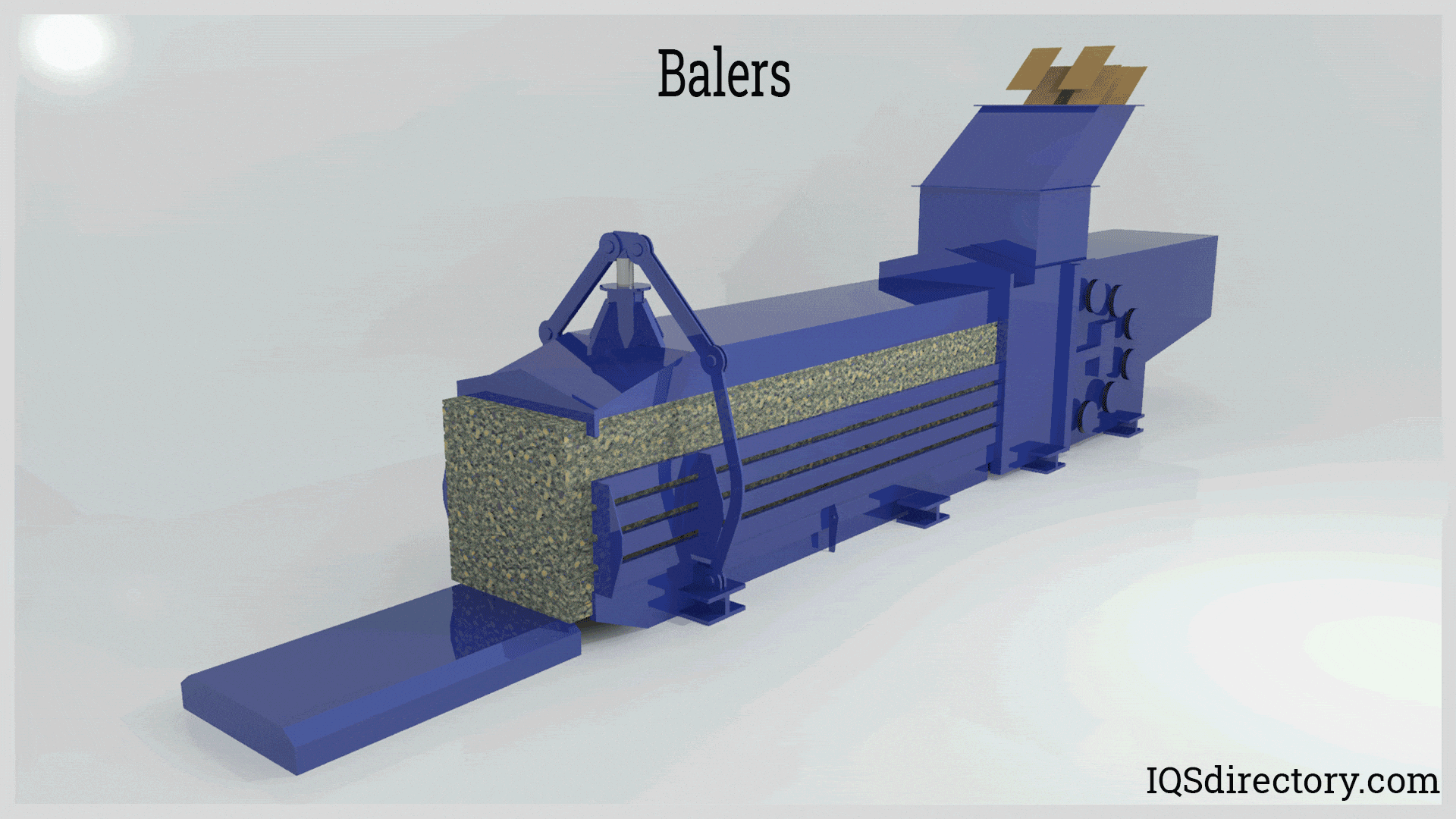
Types Of Balers
Vertical Balers
Vertical balers are good for small-scale applications. They can process small volumes of material and be loaded a few times a day. Vertical balers use downward force to compress the material. The baler is fed from the top, and the compressed material (bale) is ejected from the bottom. the bales will be standard sizes, with inconsistent density. Vertical balers can be cost-effective and efficient for smaller businesses.
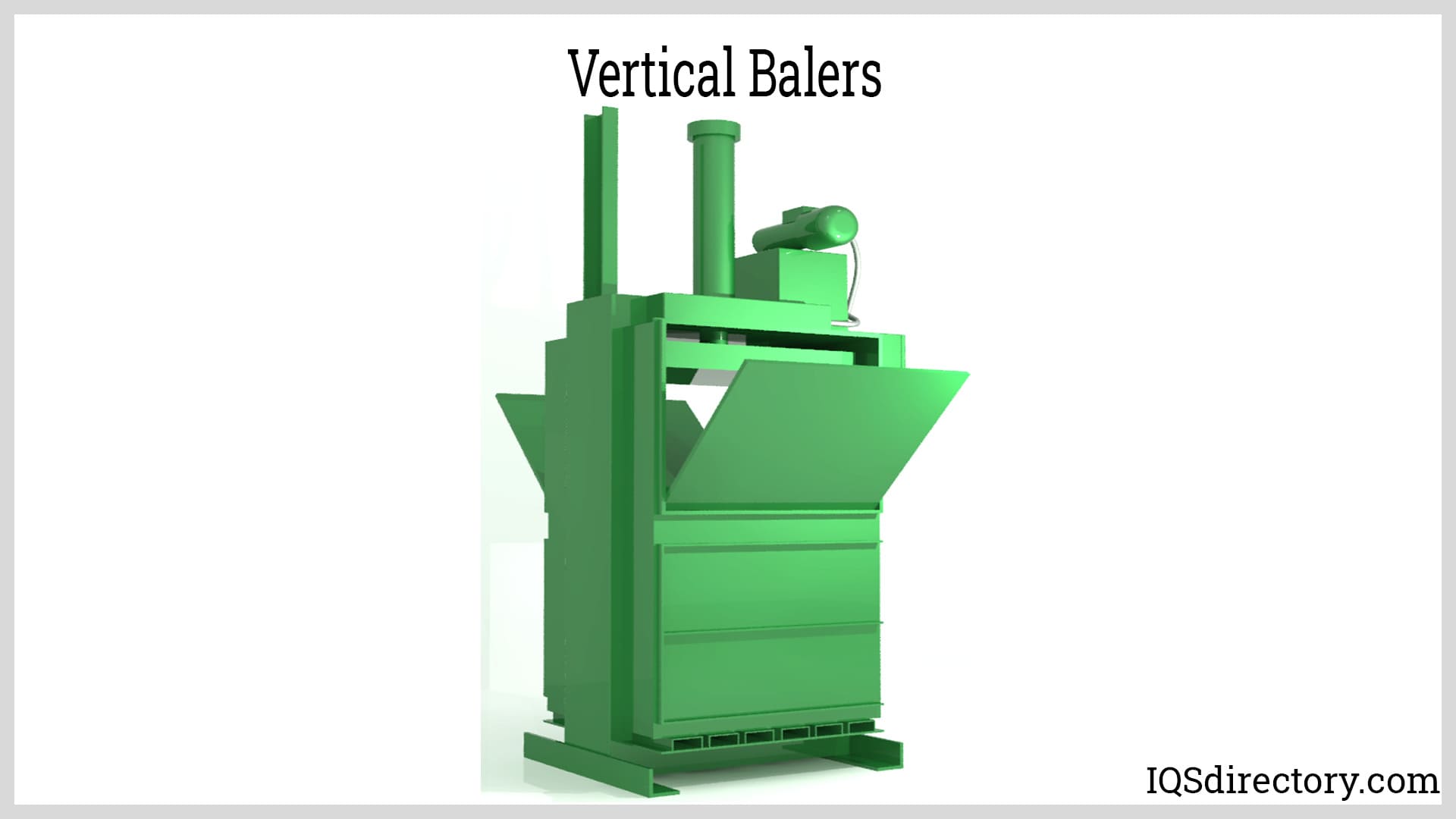
Horizontal Balers
Horizontal balers apply force horizontally using a ram. They apply more force than vertical balers, and handle larger volumes of material with a more consistent output. Horizontal balers can be integrated with shear blades to shred material in the hopper and prevent jamming. Horizontal balers are ideal for commercial setups because their process can be automated. Before purchasing, manufacturers should note that horizontal balers are expensive and require large floor space.
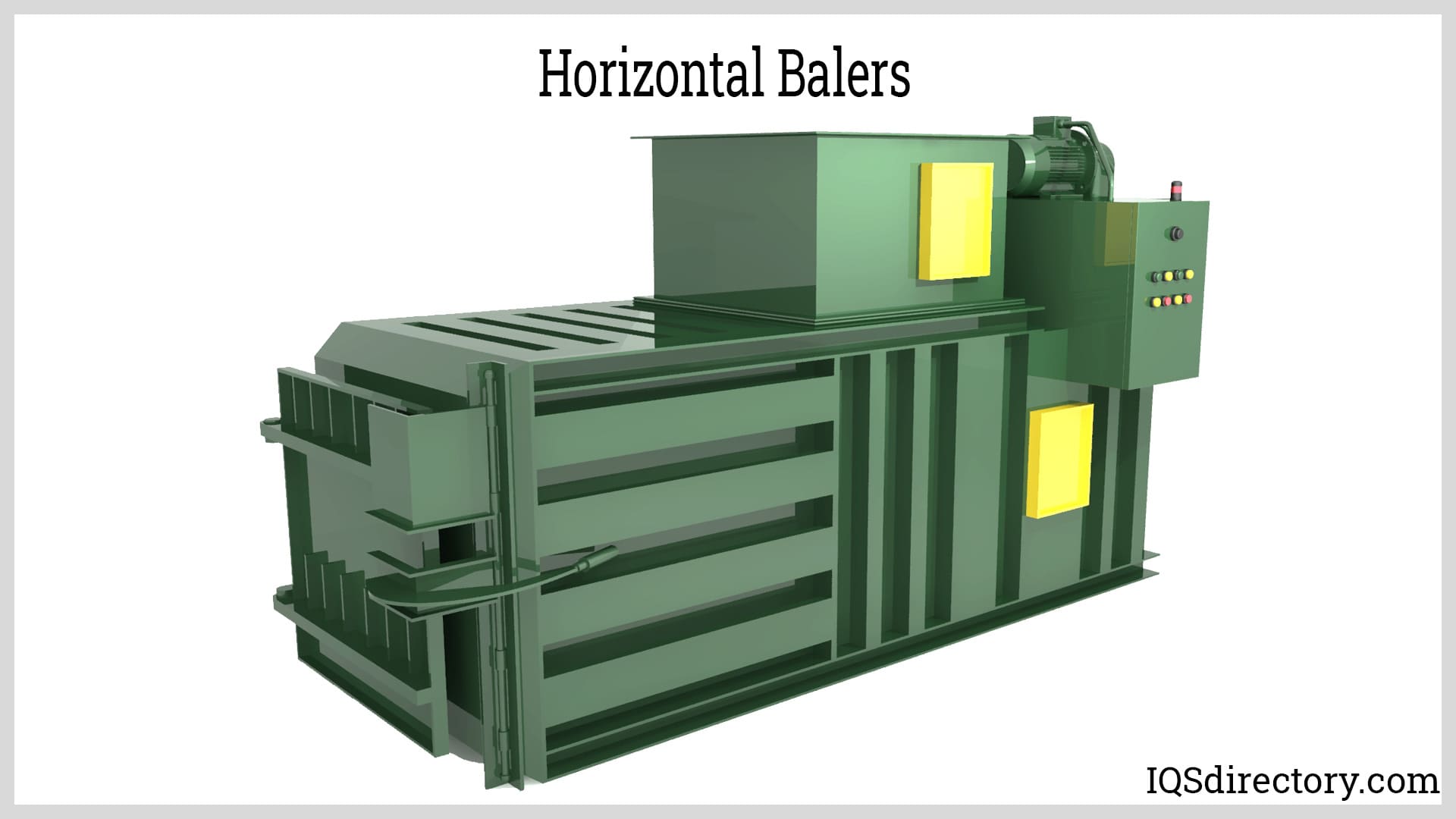
Single Ram Balers
Single ram balers use a single ram attached to the hydraulic cylinder to compress the material. They are available as closed door or open extrusion single ram balers. A closed-door single ram baler presses the material against a steel door. The door is opened after compression to eject the bale. Open extrusion single ram balers simply eject bales out of an open end.
Double Ram Balers
Double ram balers use two rams, and each ram serves a different purpose. One ram provides the compression force. The other ram acts as a mechanism control for material that may rebound (for example, rubber). Double ram balers are expensive, large, and often used in industrial facilities.
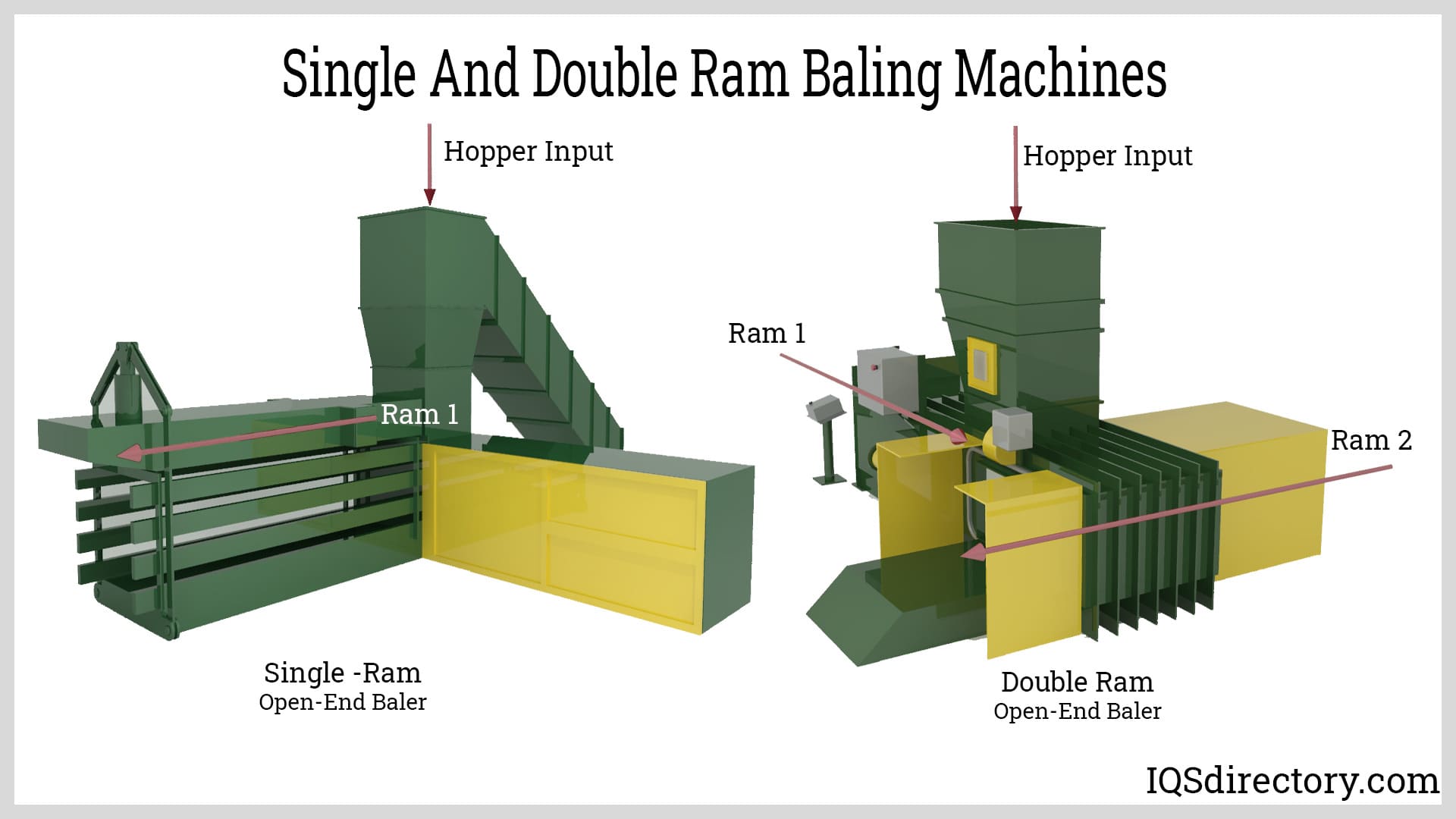
Circular or tractor Balers
Round balers are mobile balers driven by tractors and used to create cylindrical bales of hay or straw. Round balers usually process Alfalfa, clover, or Timothy grass to create hay.
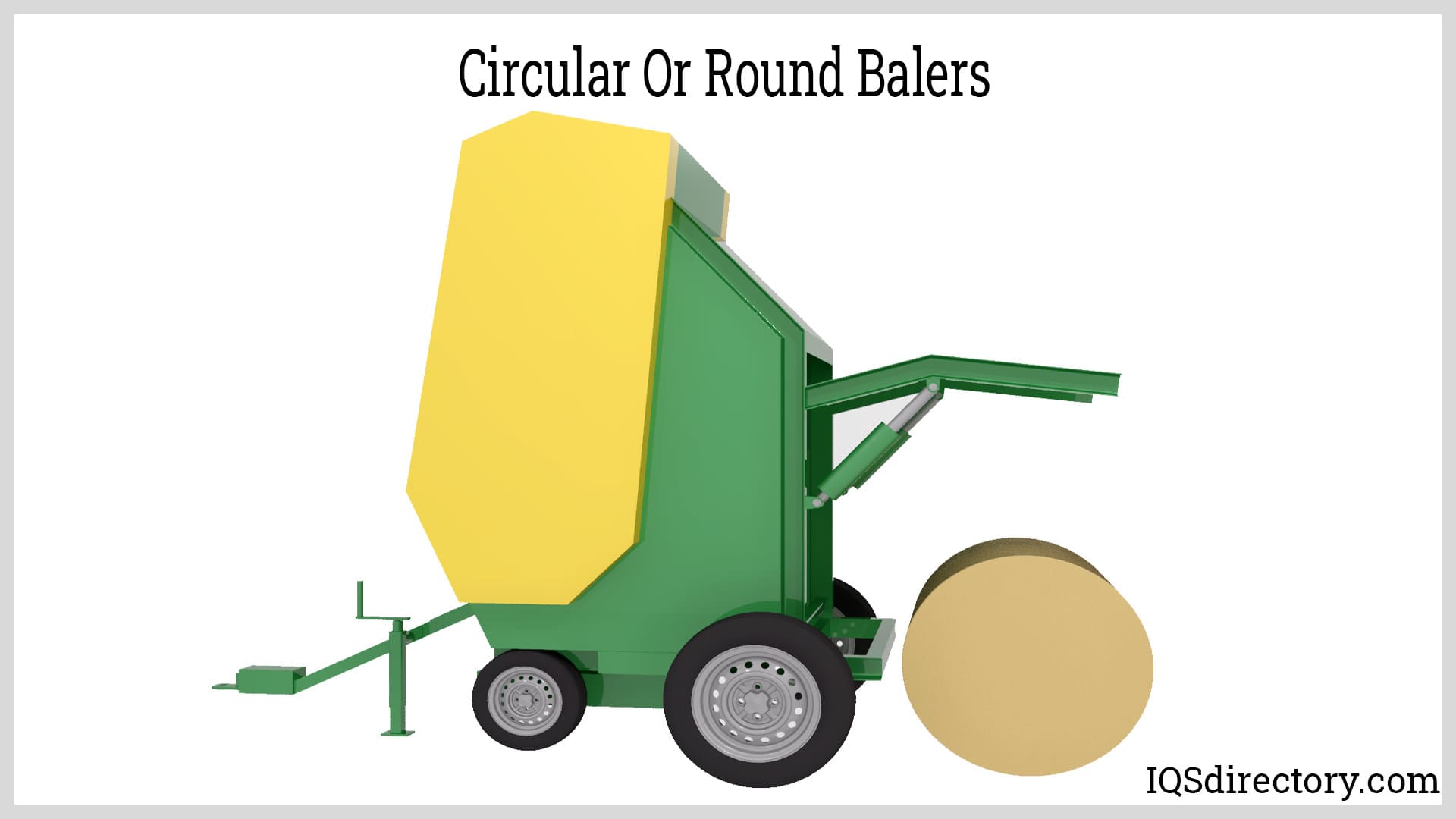
Other types of baler machines include the following:
- Ferrous balers are specifically used to process scrap metals
- Liquid extraction balers will drain liquid from processed material and are designed to resist corrosion.
- Logger balers will pre-press materials into log shapes cut them, and compress them again before ejecting the bales.
Applications for Baler Machines
Baler machines are productive in industries that produce a large volume of recyclable waste materials. Common industries that can make use of balers include
- Paper mill industries
- Distribution centers
- Municipalities in the transfer and disposition of solid waste
- Metal processing facilities
- Plastic producers and processors
- Recycling of paper, metal, cardboard, and plastics
- Agricultural industry
Advantages Of Using Baling Machines
Baler machines can reduce recycling costs, and facilitate storage and transportation of recyclable materials. They are an economical, efficient waste management process.
Disadvantages Of Using Baling Machines
Baler machines may require regular maintenance, and the larger they are, the more expensive they are to maintain. Balers can be dangerous equipment to operate, so it is imperative that manufacturers invest in trained personnel to operate them.
Choosing the Proper Bailing Machine Manufacturer
To make sure you have the most productive outcome when purchasing Bailing Machine from a Bailing Machine Manufacturer, it is important to compare at least 4 Suppliers using our Bailing Machine directory. Each Bailing Machine Manufacturer has a business profile page that highlights their areas of experience and capabilities and a contact form to directly communicate with the manufacturer for more information or request a quote. Review each Bailing Machine company website using our proprietary website previewer to get an idea of what each business specializes in, and then use our simple RFQ form to contact multiple Bailing Machine businesses with the same message.

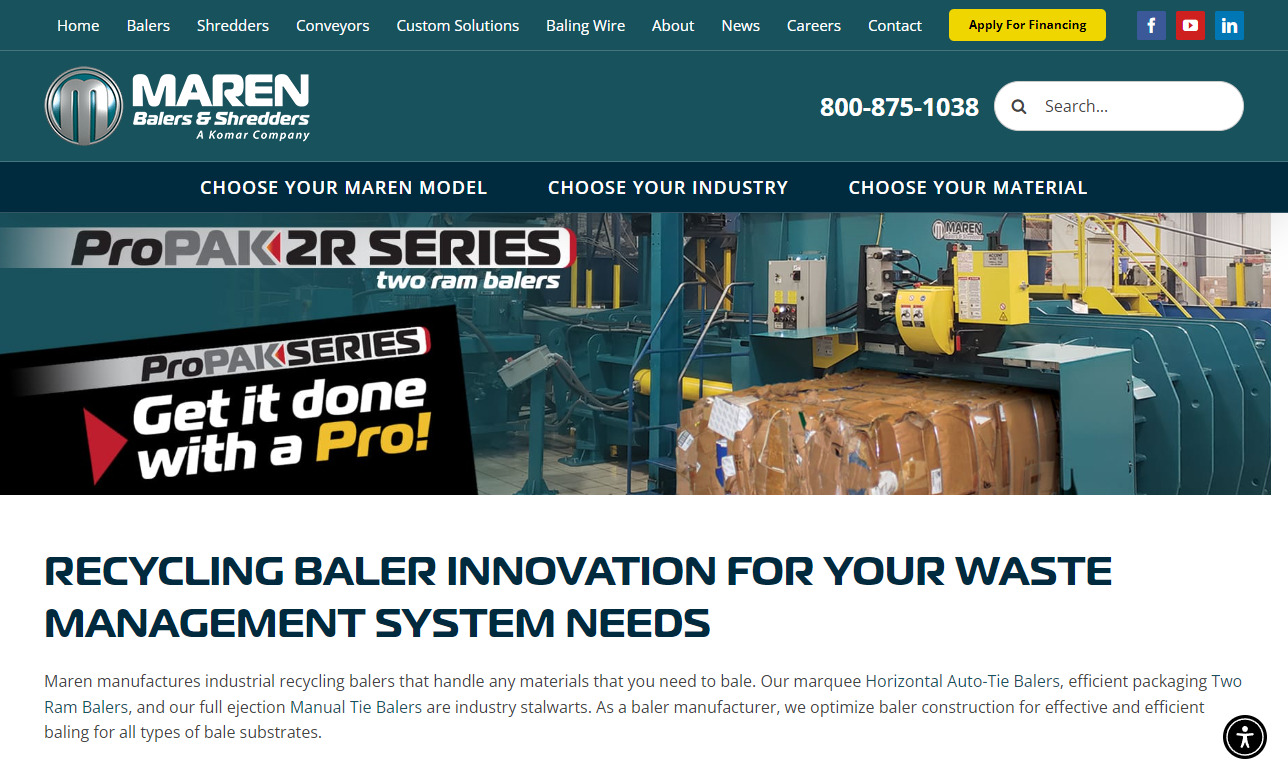
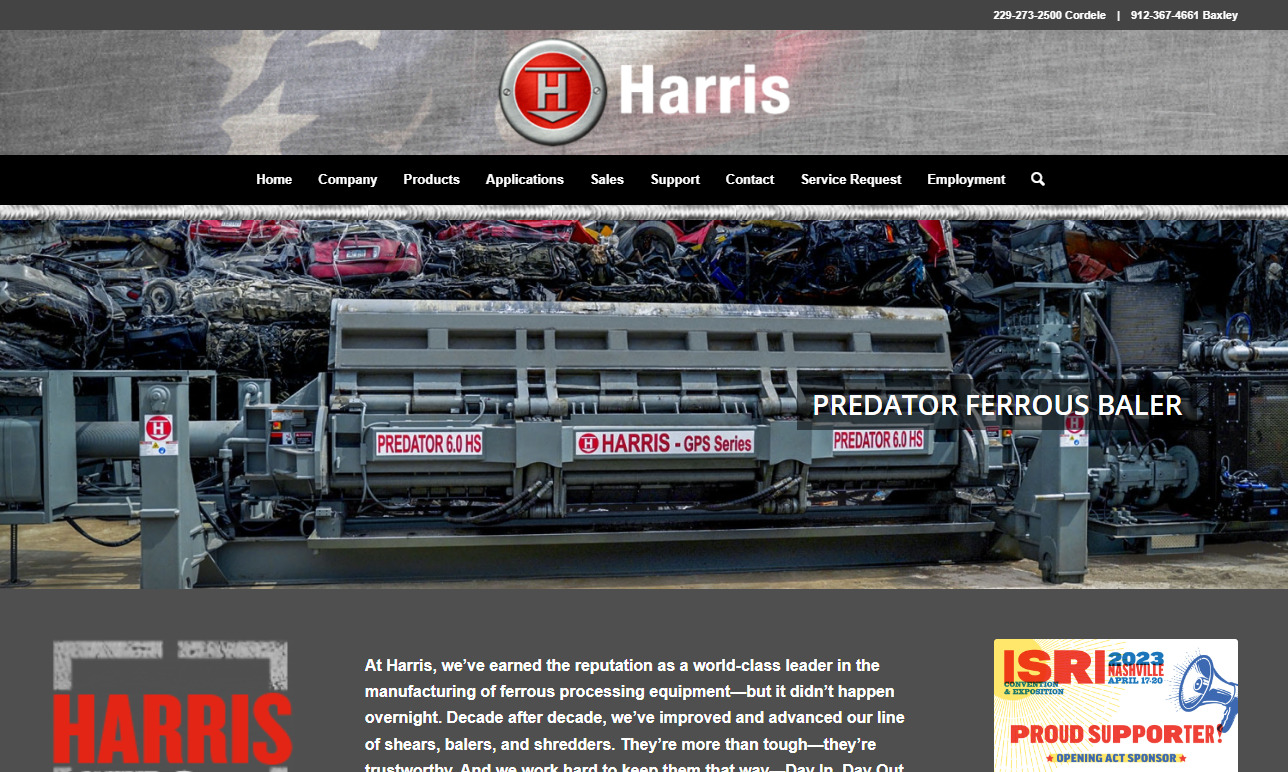
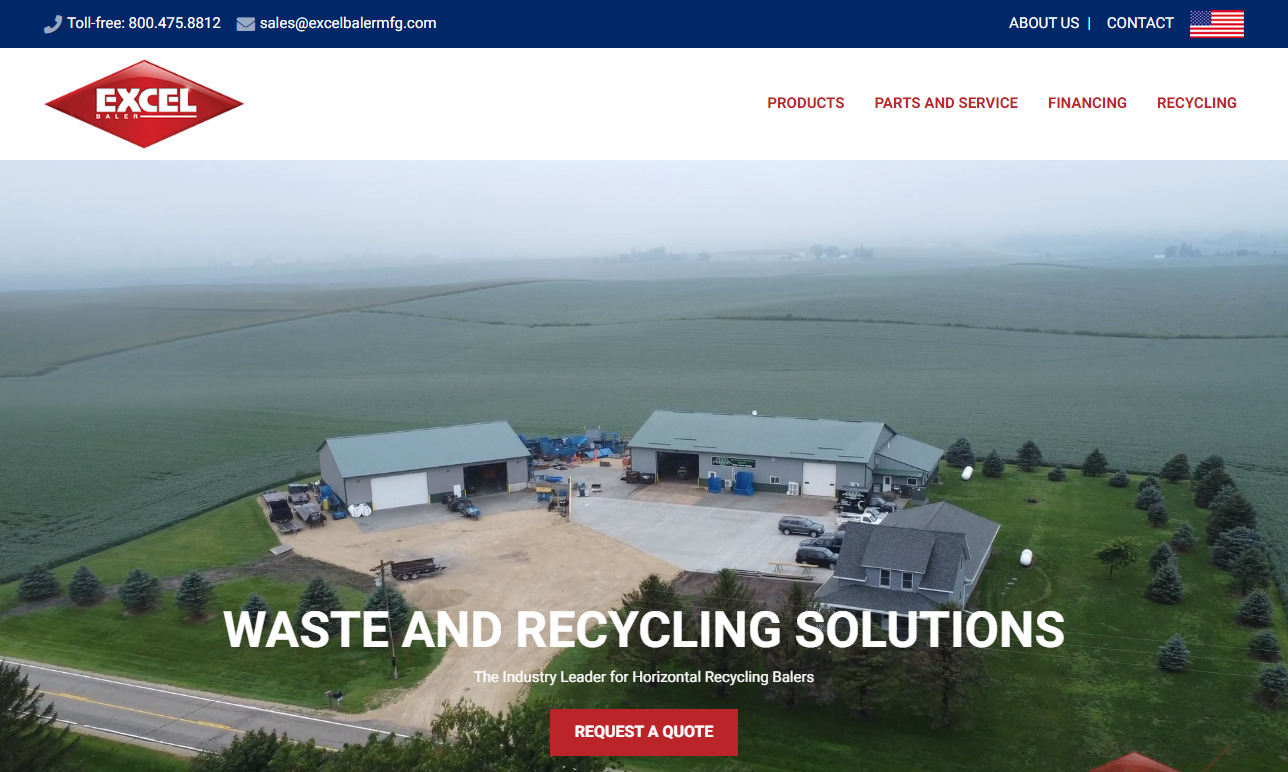
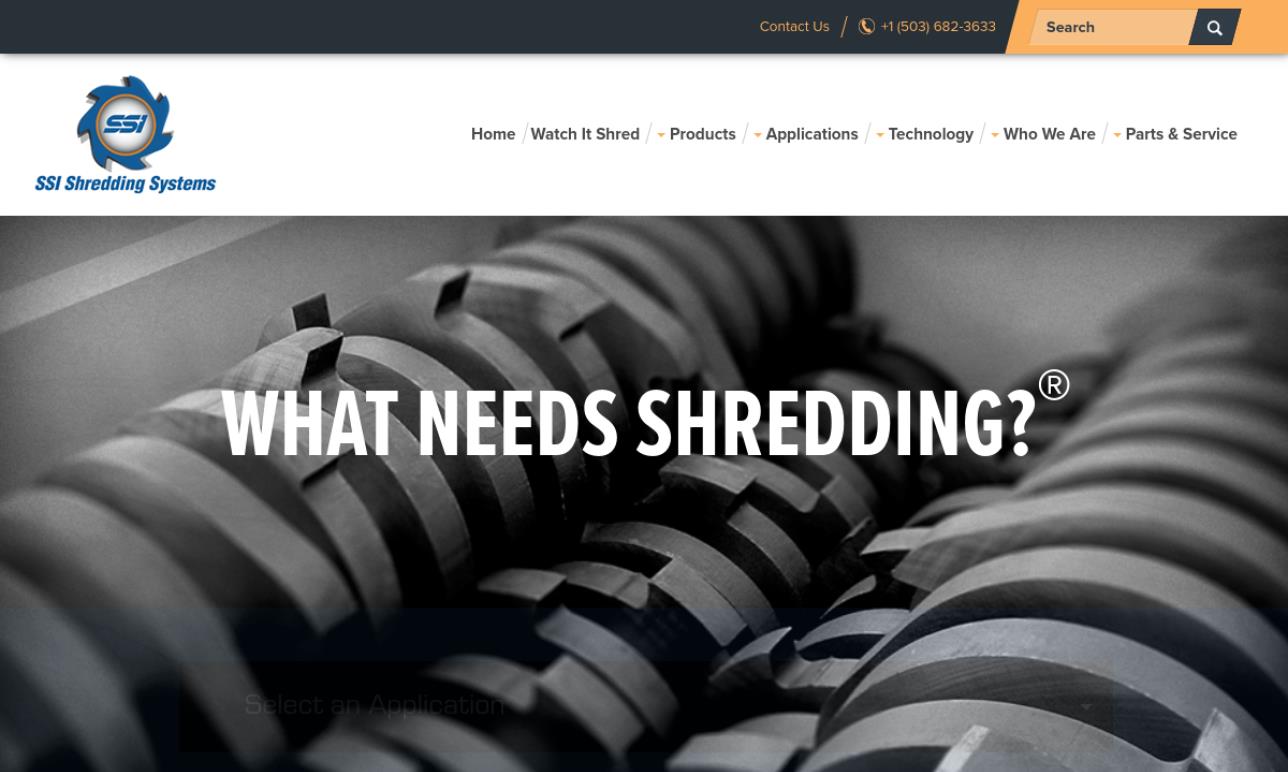
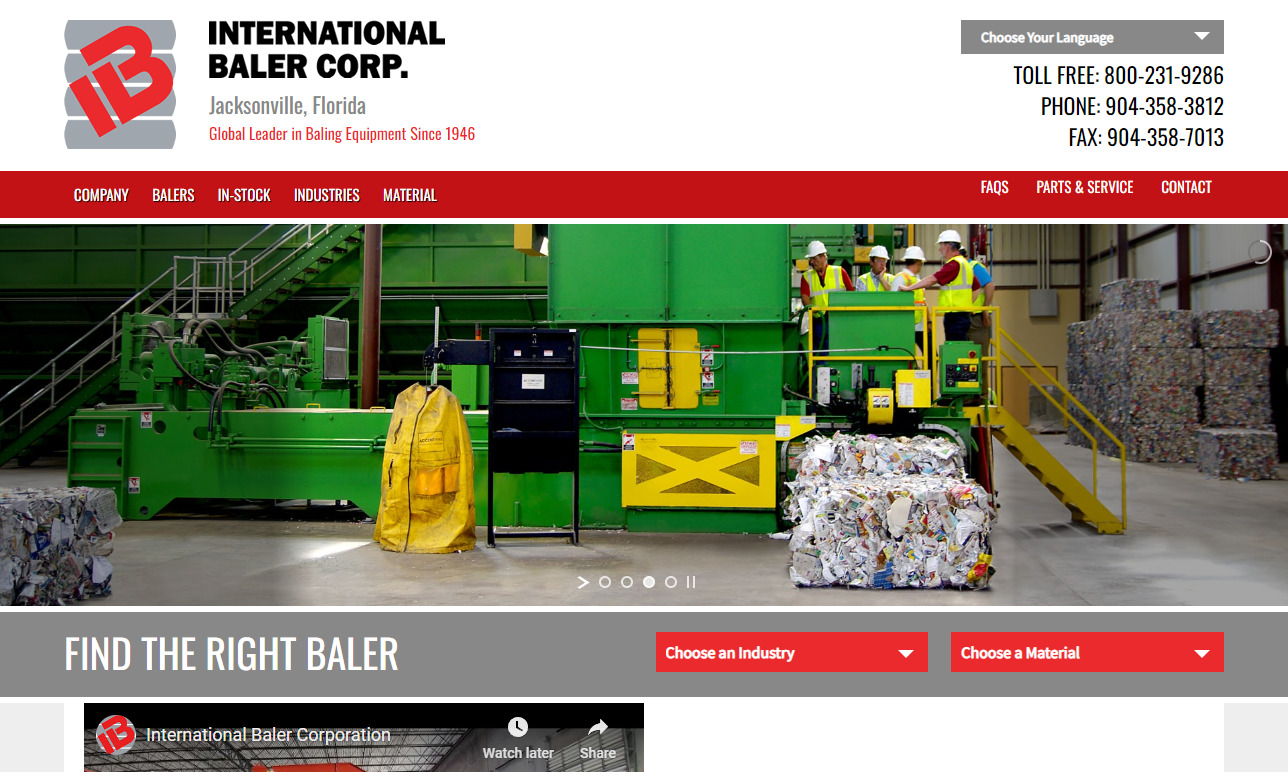






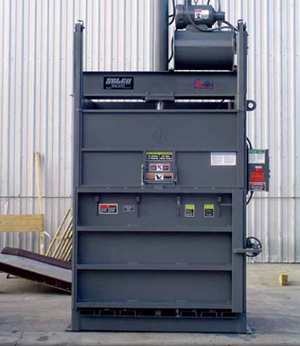 Balers
Balers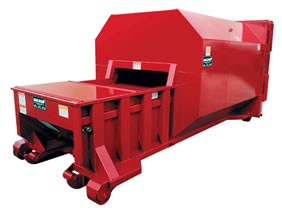 Compactors
Compactors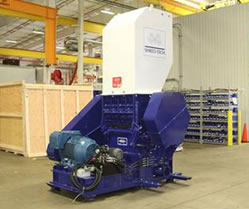 Granulators
Granulators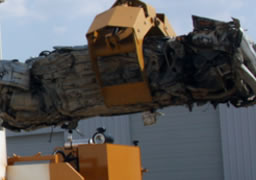 Grapplers
Grapplers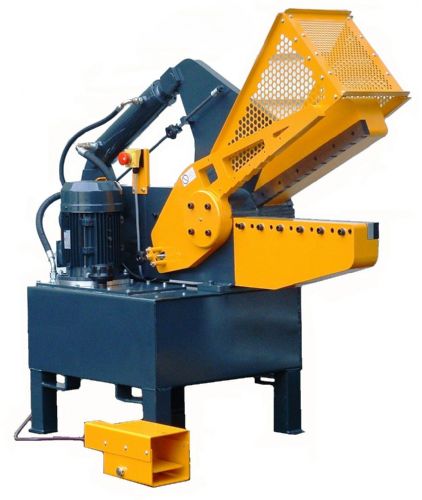 Metal Shears
Metal Shears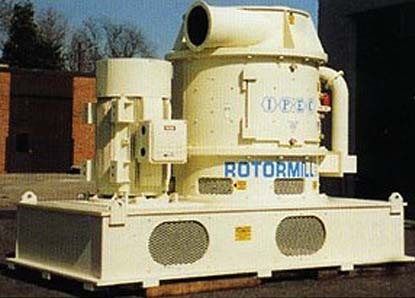 Pulverizers
Pulverizers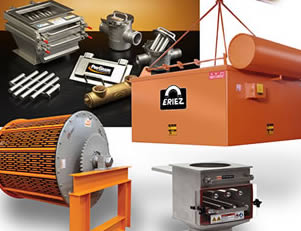 Separators
Separators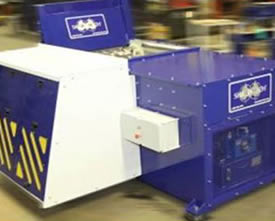 Shredders
Shredders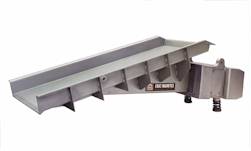 Vibratory Feeders
Vibratory Feeders Castings & Forgings
Castings & Forgings Bulk Material Handling
Bulk Material Handling Electrical & Electronic Components
Electrical & Electronic Components Flow Instrumentation
Flow Instrumentation Hardware
Hardware Material Handling Equipment
Material Handling Equipment Metal Cutting Services
Metal Cutting Services Metal Forming Services
Metal Forming Services Metal Suppliers
Metal Suppliers Motion Control Products
Motion Control Products Plant & Facility Equipment
Plant & Facility Equipment Plant & Facility Supplies
Plant & Facility Supplies Plastic Molding Processes
Plastic Molding Processes Pumps & Valves
Pumps & Valves Recycling Equipment
Recycling Equipment Rubber Products & Services
Rubber Products & Services